Why You Need to Offer Sustainable Packaging — and How to Do It Right
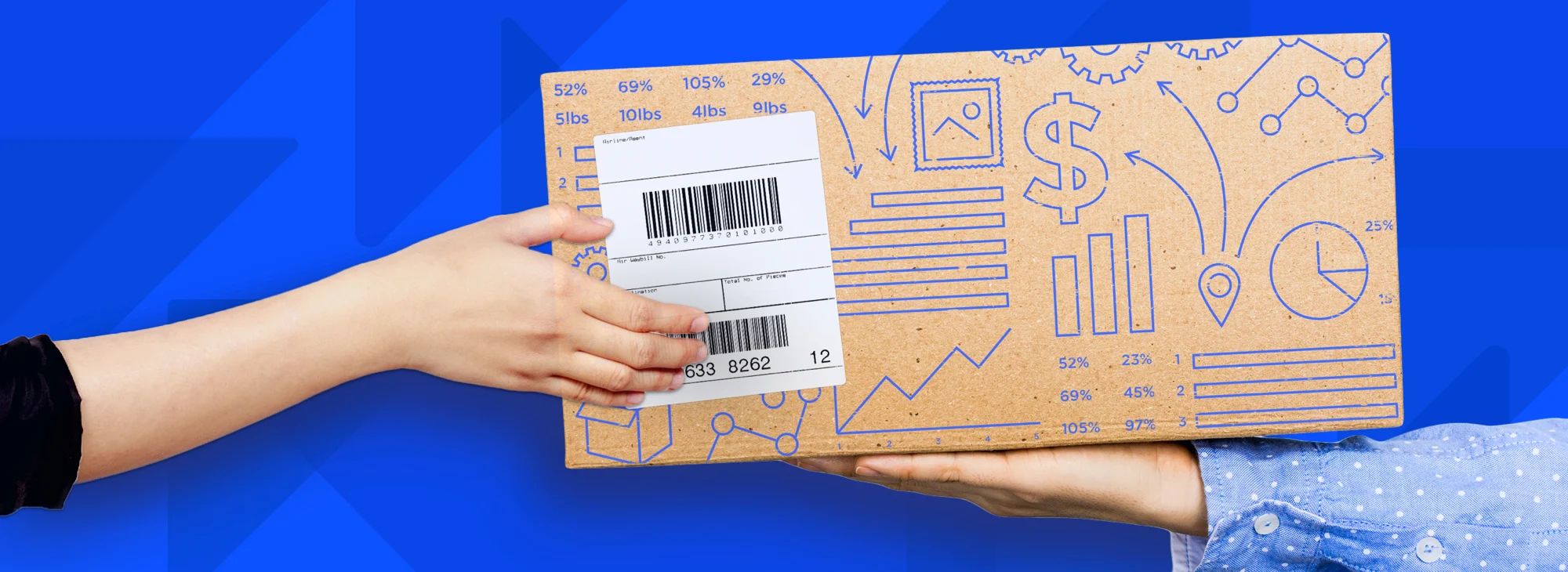

Why You Need to Offer Sustainable Packaging — and How to Do It Right
Get The Print Version
Tired of scrolling? Download a PDF version for easier offline reading and sharing with coworkers.
A link to download the PDF will arrive in your inbox shortly.
Eco-friendly initiatives used to be quite novel in the business world. Several years ago, going green was something that only niche or forward-thinking companies would promote. Today, however, engaging in sustainable practices isn’t something that’s nice to do — it’s increasingly becoming the standard.
Various organizations are calling for more collective, eco-friendly efforts to sustain the planet.
The United Nations points out that should the world’s population reach 9.6 billion by the year 2050, we’d need the equivalent of almost three planets to sustain current lifestyles.
Since we only have one livable planet, everyone has to play a part in preserving the environment.
To that end, if you’re an ecommerce store that wants to be more eco-friendly, one important thing you can do is use sustainable packaging. You’re in the business of selling goods to consumers, so you likely use a lot of different materials whenever you pack and ship products.
Choosing Earth-friendly packaging supplies and processes will go a long way in minimizing the waste and pollution that end up in our landfills and oceans.
To help you navigate the ins and outs of sustainable packaging in ecommerce, we’re covering what sustainable packaging is and how to implement it. You’ll also meet other ecommerce merchants that are doing a great job of going green.
What Is Sustainable Packaging?
Sustainable packaging refers to the sourcing, development, and use of packaging solutions that have minimal environmental impact and footprint.
Simply put, sustainable packaging is earth-friendly and doesn’t contribute to the further depletion of natural resources.
The Sustainable Packaging Coalition (SPC) offers the following 8 criteria for packaging to be considered sustainable:
Is beneficial, safe & healthy for individuals and communities throughout its lifecycle.
Meets market criteria for performance and cost.
Is sourced, manufactured, transported, and recycled using renewable energy.
Optimizes the use of renewable or recycled source materials.
Is manufactured using clean production technologies and best practices.
Is made from materials healthy throughout the life cycle.
Is physically designed to optimize materials and energy.
Is effectively recovered and utilized in biological and/or industrial closed-loop cycles.
Advantages of Sustainable Packaging
We’ve talked a great deal about sustainable packaging solutions and the different strategies that go along with it, but what exactly can you get out of eco-friendly packing?
Let’s look at the advantages of sustainable packaging:
Expand your customer base and increase brand loyalty.
Being more sustainable can help you acquire more customers and boost loyalty while you’re at it. Multiple studies have shown that consumers are increasingly factoring in sustainability when choosing which brands to do business with.
A survey by CGS of 1,000 U.S. consumers found that almost 70% of respondents considered sustainability as at least “somewhat important” and almost half (47%) said that would pay 25% more for sustainable products.
Additionally, research by Nielsen found that 48% of consumers are willing to change their consumption habits to lower their impact on the environment. And that’s not just lip service. Nielsen’s analysis found that sustainable product sales in the United States have grown nearly 20% since 2014, and the company estimates that sales would reach $150 billion by next year.
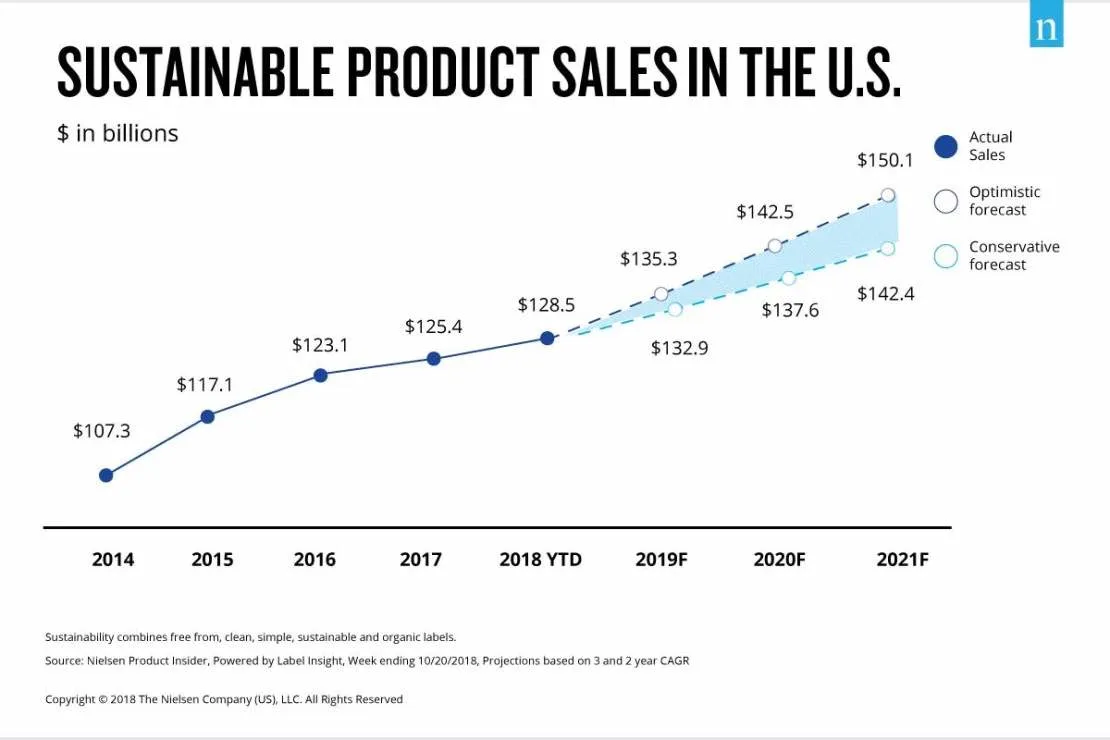
Consolidated storage.
Reducing packaging materials and minimizing waste are two big components of sustainable packaging. And when implemented correctly, they lead to more efficient storage, so you can limit the space required to house your products (thus lowering storage costs), or open up additional space to store more merchandise.
Lower shipping costs.
As mentioned earlier, shipping small smaller packages is a great way to practice sustainability. A bonus to this is it also lowers your shipping costs.
For instance, sending out a 12 x12x12 box weighing 1 lb from New York to Los Angeles costs $23.65 via UPS Ground. But if you manage to fit your product into a smaller 10x10x10 box, you lower your rate to $17.72. That’s a difference of $5.93, which can add up quickly!
Sustainable Packaging Strategies
Now that you know what sustainable packaging is and what it entails, let’s look at the strategies and packaging innovations you can implement to be more eco-friendly with your packaging.
In this section, we’ll cover the following strategies:
Share disposal and recycling best practices.
Ship in a smaller package.
Recycled packaging materials.
Plant-based packaging.
Edible packaging.
Plantable packaging.
Compostable and biodegradable plastic alternatives.
Avoid over-packaging throughout the supply chain.
Use manufacturing partners with sustainable practices.
Check them out in more detail below and see which practices make the most sense for your ecommerce business.
1. Share disposal and recycling best practices.
Educate your customers on the best ways to recycle and dispose of your packaging materials. This step can be a little tricky because recycling varies from city to city. But you can share general best practices by clearly labeling reusable or recyclable packaging.
The cleaning brand, Mrs. Meyer’s Clean Day, does a great job here. In addition to having a recycling icon on its bottles, the brand’s labels have a line that reads:
BOTTLES ARE MADE WITH AT LEAST 30% POST-CONSUMER PLASTIC. PLEASE RECYCLE.
2. Ship in a smaller package.
Reducing your ecological footprint can be as simple as reducing the packaging materials you use. This means using smaller boxes, bags, and containers for your products. Not only does this help you be more sustainable, it can also lower your shipping costs.
Reducing the size of your shipments starts with purchasing smaller packing supplies and using fewer filler materials.
If possible, play around with the size and positioning of your products and see if they can fit in smaller packages.
For example, if you sell furniture that can be disassembled, explore the ways that you can position the different components of your product to figure out the approach that saves the most space. Shipping apparel, bedding, or any other foldable products? Keep them tightly folded or bundled so they’ll fit snugly in smaller boxes.
3. Recycled packaging materials.
Recycled packaging is a great way to extend the life of previously used materials. When deciding on boxes, mailers, or containers, consider using packaging that’s made out of recycled materials.
Paperboard cardboard is one of the most common examples of recycled packaging. Paperboard is created using used paper pulp; it’s also lightweight and can easily be cut and formed, making it ideal for shipping boxes.
You can also opt for containers and mailers that are made from previously used plastic materials such as single-use bags and bottles. These plastics are processed at a recycling facility and put back into circulation in the form of packaging supplies.
4. Plant-based packaging.
Plant-based options are rapidly making inroads into the world of product packaging. As its name suggests, these materials are made out of biological sources — everything from mushrooms and seaweed to corn and food waste.
The right plant-based packaging options will depend on the products that you need to package or ship. If you’re selling food, for example, then you should ensure that the material can protect your product without affecting its flavor (bioplastics are a good solution for this). If you’re shipping bulkier items, then select durable plant-based materials such as packaging made out of cornstarch and mushrooms.
5. Edible packaging.
Think of edible packaging as a cousin of plant-based. They come from the same family (i.e., biological sources), but edible packaging takes things a step further by being safe to eat.
Edible packaging is an ideal option for retailers that sell food and beverages, as it could serve as a great addition to your already delicious offerings.
6. Plantable packaging.
Plantable packaging is exactly what it sounds like: these are packages or materials that you can plant. Plantable packages have seeds embedded in them, so your customers can plant them after they’ve been used.
Plantable packaging works great for containing small and lightweight items such as cosmetics or jewelry. They can also be used as fillers or product wraps.
7. Compostable and biodegradable plastic alternatives.
Compostable packaging is made out of materials that can be composted at home and commercially. They’re often made from plant-based polymer that can break down in compost.
How long does it take to fully compost these packages? Depending on the quality and materials, a commercial compost facility can break these packages down in 90 days, while domestic compost conditions can do it in 180 days.
8. Avoid over-packaging throughout the supply chain.
Packing materials are abundant in the retail supply chain. Products are bagged, baled, or bundled before they get to you, often using additional packaging. As such, you need to optimize how merchandise moves across the chain so you can minimize these materials — and the waste that comes with them.
Work with your suppliers and vendors to optimize your supply chain practices. Some of the things you could try are:
Forecast demand properly to ensure that you don’t overproduce or over-order products.
Consolidate shipments to use fewer packaging materials.
Urge your supply chain partners to use sustainable materials throughout the process.
9. Use manufacturing partners with sustainable practices.
Choose to work with manufacturers that prioritize sustainability. Do your research. Before signing an agreement with a supplier, ask about their manufacturing processes and practices. Do they use sustainable materials? What are they doing to minimize their ecological and carbon footprint?
If possible, check out their premises to get a first-hand look at their facilities, equipment, supplies, etc. From there, you can make an educated decision on whether or not to work with them.
4 Steps to Transition Toward Eco-Friendly Packaging
Ready to transition to an eco-friendly packaging solution? Great. In this section, we’ll discuss the steps you should take to successfully make the switch. Here are some pointers on how to implement sustainable packaging correctly.
1. Don’t change everything at once.
If you’re coming from non-sustainable practices, it may be tempting to revamp your entire process to be more eco-friendly. But this approach can do more harm than good.
For starters, introducing new materials and ways of doing things requires research, testing, and even trial and error. If you try to change everything all at once, you’ll overwhelm yourself and your team and fail to implement your initiatives properly.
To make your sustainable efforts… well, sustainable, take things slow. Rather than replacing all your supplies with greener alternatives, start with one or two things. For example, if your boxes or mailers come in different sizes, kick things off by replacing one size first to see how it goes. Depending on the results of your efforts, you can move on to other sizes.
2. Order product samples.
There are plenty of companies that offer eco-friendly packaging. The best way to figure out which one is right for you is to get your hands on some samples. If the vendor agrees to provide them for free, then great. Otherwise, place a small order so you can evaluate their products.
Here are some of the factors to consider:
Compatibility with your merchandise – See to it that the packaging materials are a good match for your products. Place your items inside then evaluate how well they fit. Does the package showcase your products in the best possible way? Would it be easy for your customers to unbox or remove items from the container? These are some of the questions you should be asking when evaluating your options.
Durability – Do a stress test with the packaging. Place your products inside then try to recreate what a package would go through during a typical shipping journey. If possible, bend the material, apply some pressure, or even throw it around to see how well it can protect its contents.
Weight and size – As mentioned earlier, a few grams and inches here and there can add to your shipping costs. Choose packaging with just the right dimensions and weight — i.e., large and durable enough to contain your products, but not too big or heavy that you end up overspending on shipping.
3. Adjust your pricing.
Depending on what type of packaging you decide on, you may end up paying more for the materials and shipping costs. Be sure to factor this in when pricing your products. If you plan to eat the extra costs, do the math to make sure your bottom line doesn’t take too much of a hit.
4. Order small volumes.
This is an important step, particularly if you’ve just started working with a new sustainable packaging vendor. Order small volumes of the packaging materials and assess durability, customer reception, and overall performance compared to your old packaging.
Then, start ordering more as you fully transition to your new packaging.
Environment-Friendly Packaging Examples
If you’re looking for ideas and inspiration for your sustainable packaging efforts, the following brands are worth checking out.
1. The Tshirt Mill.
The Tshirt Mill is an ecommerce retailer that produces customized apparel and accessories. It lets customers upload their designs onto various merch so they can create unique pieces.
When it comes to order fulfillment, The Tshirt Mill ships orders in 100% compostable mailers, which are made from bio-based polymer and plant materials like wheat and straw.
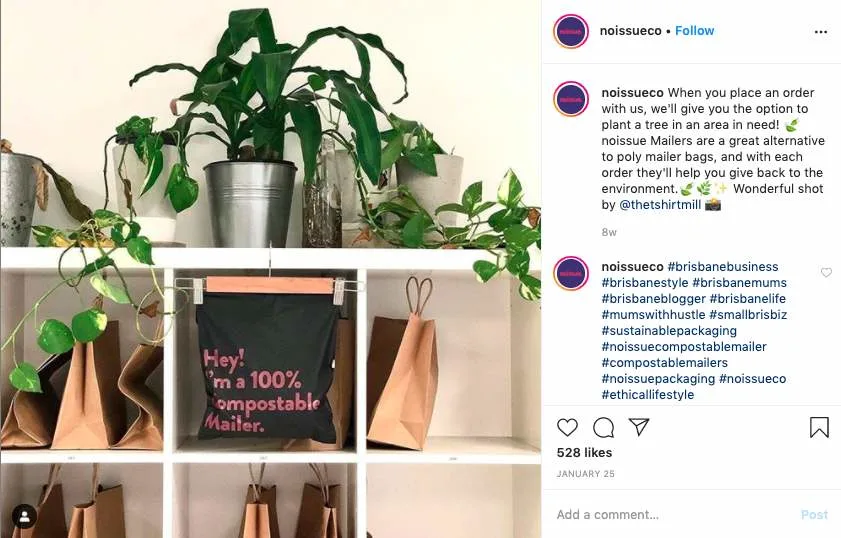
2. Ritual.
The vitamin supplements company Ritual serves as a great example of a business that uses recycled packaging (with plant-based ink to boot). Earlier this year, Ritual switched to a mailer that’s made exclusively from recycled newsprint and fibers.
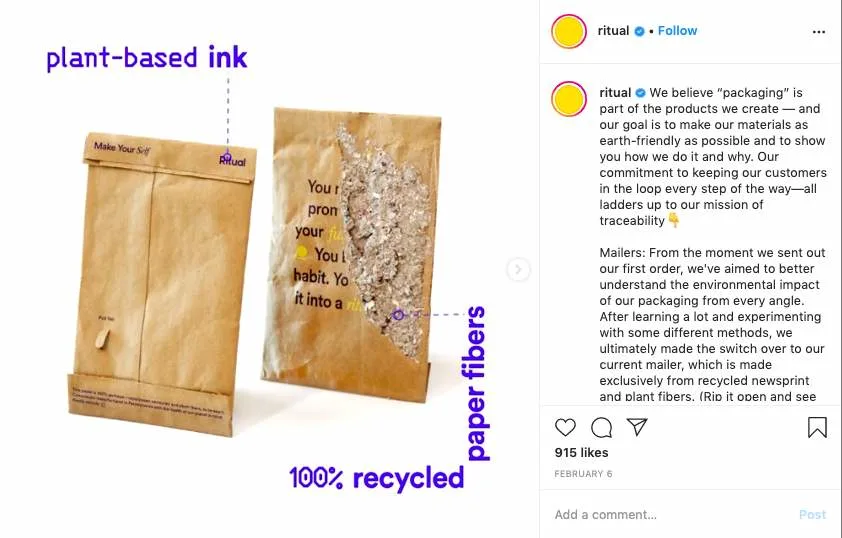
Ritual’s eco-friendly efforts extend to its bottles and caps. Its vitamin bottles are made from repurposed plastic and the caps are sourced from post-industrial resin (i.e., scraps from the manufacturing process).
3. Maison Tess.
The home textile brand Maison Tess. is all about sustainability. Its products are recognized for high standards of sustainability and social responsibility, and those measures also apply to the company’s fulfillment efforts.
In addition to mailing out its products using 100% compostable mailers, Maison Tees. also offers reusable packaging. All Tess. orders come in cotton drawstring bags that customers can use again and again.
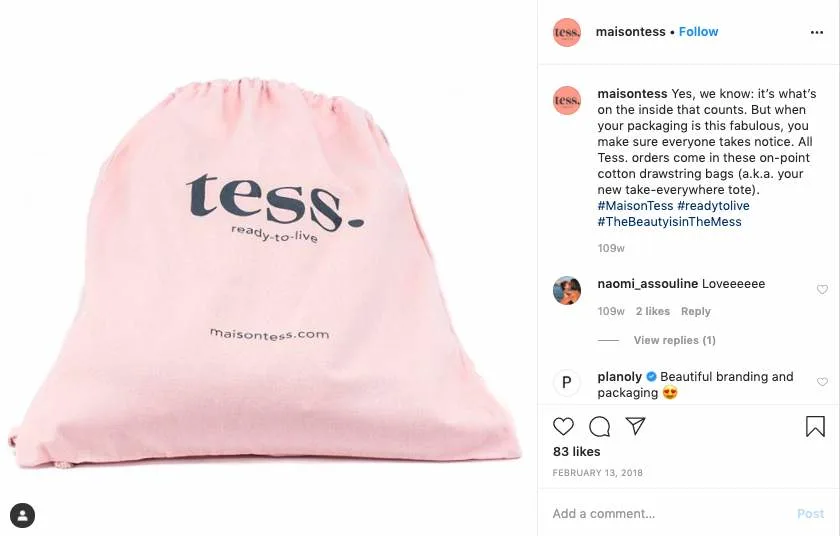
4. FoodCraft.
FoodCraft, a company that specializes in organic, dairy-free, and vegan foods, ensures that its packaging is also plant-based. FoodCraft uses boxes that are made from plant-based PLA and are completely compostable.
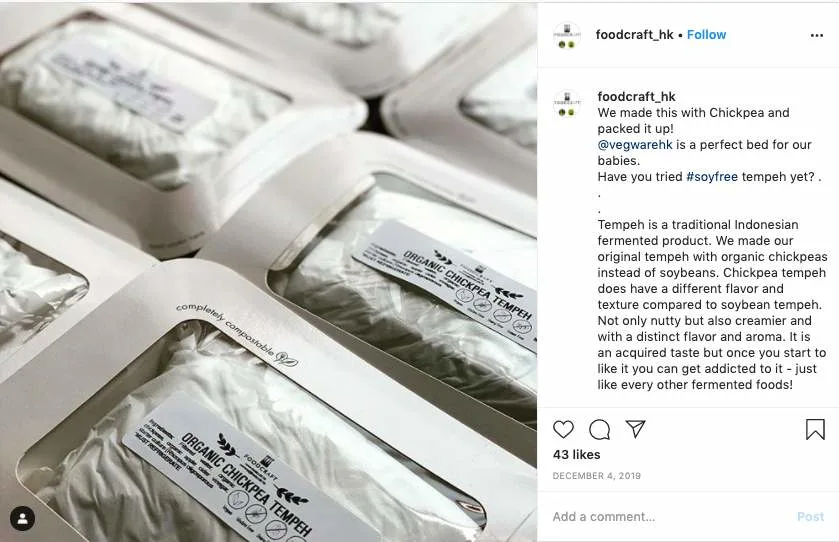
5. Mrs. Meyer’s Clean Day.
The cleaning products brand, Mrs. Meyer’s Clean Day, uses recyclable bottles for its various soaps and cleansers. What’s more, its bottles are made with at least 30% post-consumer plastic, and as mentioned earlier, the brand encourages eco-friendly behavior in its customers by reminding them to recycle its bottles on the labels.
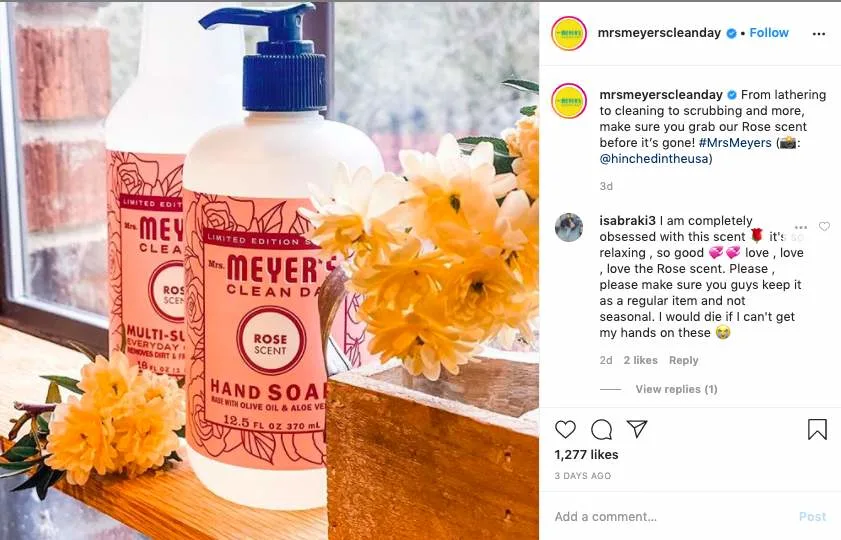
Executive Summary
There are plenty of ways to go green with your packaging, and the right approach depends on your business.
Whether you choose to use eco-friendly materials, switch up your vendors, or optimize your supply chain processes, you need to ensure that your initiatives stick. The best way to do that is to do things one step at a time, measure the results, then expand from there.

Francesca Nicasio is a writer and content strategist who's passionate about the retail industry, she’s constantly sharing insights to help retailers grow and succeed. When she’s not in front of the computer, you’ll find her curled up with a mystery novel or spending quality time with her family. This piece was written in collaboration with noissue.co.


